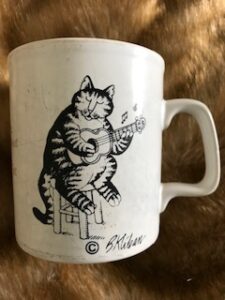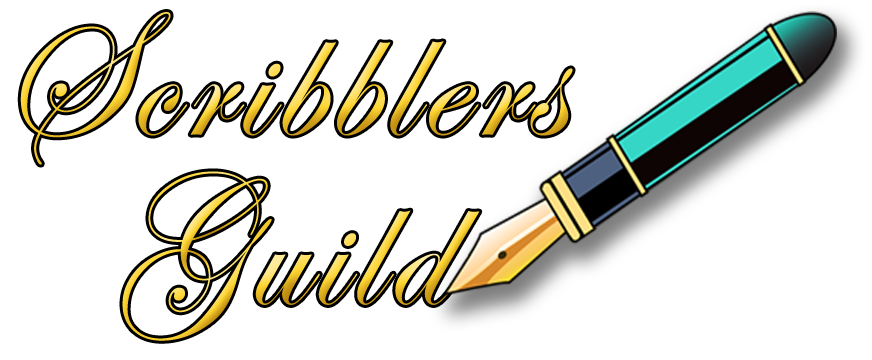Repeat After Me…

The Power of Focus in Writing
Too much repetition is bad, except when it’s not.
Too much detail is bad, except when it’s not.
So, what do I mean by that?
Often, we weaken our writing by repeating words and phrases without being consciously aware that we’re doing so, but the proper use of repetition can help strengthen our writing, give it more impact and make it more memorable.
The same is true for unnecessarily detailed descriptions. There’s a time and place for both of these techniques when we use them to focus our readers’ attention on something in the narrative.
In our brain, we have something called the Reticular Activating System. It’s responsible for bringing to our attention repeat occurrences of things that interest us. Every second, we are bombarded by millions of bits of sensory information. In order to prevent us from becoming overloaded, the RAS acts like a filter and is responsible for focusing on only the information that’s relevant.

When something is first brought to our attention, because the RAS hadn’t previously been alerted to its importance, we tend to ignore it. Copywriters and advertisers know this and deliberately use repeated phrases, detailed descriptions, and emotionally stimulating images to make sure we remember their specific brand over all the others. They know that once we focus on something, all of a sudden we find it all over the place. For example: We begin researching new cars and settle on a new blue Ford Focus. Suddenly we see them everywhere.
The RAS is the basis of serendipity and the Law of Attraction, those coincidental meetings or happenings that occur at the perfect time, but it’s not because something new suddenly showed up. It was there all along but it just didn’t register. We simply didn’t notice, because it wasn’t relevant.
![]()
Repetition and Detail
Too much repetition is bad…

Especially when we’re new to the writing game, we can overdo this repetition habit, because we want to make sure our readers get the point we’re making, but that’s doing a disservice to our audience.
When the information is incidental, repeating it or describing it in detail to get the point across only irritates your reader, because they’ll expect it to become significant later in the story. We need to respect our readers’ intelligence and give them the opportunity to put the pieces together on their own.
Sometimes we’ll use the same words and phrases over and over because we can’t think of a better way to say the same thing. This is why a thesaurus is an invaluable tool for making your story’s vocabulary more varied and interesting. There are dozens of ways to say “walked”, for example. “Ambling” has a whole different meaning from “striding” or “tiptoeing”. Be creative when avoiding repetition.
In order to avoid redundancy, we can use online editors to help discover where we’re overusing certain words and phrases. Editors such as ProWritingAid, Hemingway, Grammarly and Autocrit are invaluable tools to help us improve our writing.
Except when it’s not
- Repetition adds emphasis to particular ideas. We can learn to use it where it will have the most impact.
- It can make our story feel more convincing, more emotional, or more dramatic.
- Repetition can create a rhythm, a poetic or musical quality to the words that makes them appealing. This makes them memorable.
- Repetition can be a pattern interrupt. By repeating a word or phrase, you stop the reader cruising along and cause him to stop and take notice.
- It can be a powerful tool for persuasion — to make your reader understand a point or change his mind.
Too much detail is bad…

Not only too much detail, but even more importantly, the wrong detail is bad. When we wax poetic about a coffee mug, there had better be a good reason for the reader to remember that mug. It must show up later in the story, as a critical clue, a symbol, a solution or resolution of some kind. Otherwise, it’s just fluff.
The amount of detail we use should always be in context. Use detail sparingly where it doesn’t matter to the main controlling idea of each chapter, scene, paragraph and sentence. Use it judiciously where it does matter — where it can add drama, understanding and impact or foreshadow future significance.
It’s critical that we know what are the most meaningful components of the scene we’re writing, and what is the main topic or theme of the current scene, chapter and overall story. Who is the Point of View character? What is the goal of the scene? What is it about? Why is it necessary? What is the turning point or point of change in the scene? All of these questions help determine the amount and the positioning of the detail we include.
If the story’s controlling idea is about redemption of the spirit, the details that matter are the ones which describe the character’s emotions, actions and reactions in relation to the conflicts which challenge him, the objects that matter to him and why, the sensory impressions he experiences. What he had for breakfast is irrelevant.
Unless there is relevance to the story’s controlling idea in his stained and chipped coffee mug with a cracked handle and a faded cartoon picture of a Kliban cat — perhaps it’s a symbol of lost innocence or a reminder of the day he made a terrible decision which changed his life — why would we include this amount of detail? The reader will remember this level of focus and expect this item to show up later in the story, because we have given it significance and made it memorable.
Occasionally we’ll find ourselves using excessive detail to fill in a scene where nothing much happens, maybe to make up our word-count or to persuade our reader to our own point of view. This can make our writing feel laboured, heavy-handed and boring. Worse, it can feel like some sleazy used-car salesman trying too hard to convince the reader of something slightly nefarious. Our reader’s automatic defence is to disagree or disengage. Not exactly the reaction we’re looking for.

Too much detail when it’s not needed deflects readers from the significance of the points we want to make. It feels like entering a cluttered room. They don’t know where to look next, or even what’s important. It’s just too distracting.
Finally, the amount of detail is largely dependent on Point of View. If the story is written in first person or deep third person limited, it’s not possible for the reader to know details the characters wouldn’t know. But in omniscient third person P.o.V, the narrator can let the reader in on a lot more information, details the characters don’t notice.
Except when it’s not…
- Details aren’t there for filler. They enhance our narrative in terms of dramatization, structure, style and characterization,
- Details provide grounding and proof. They offer authenticity and truth, giving meaning and significance to the item mentioned or the emotion revealed.
- It’s better to have one or two very specific details that minutely describe something about a character, a situation or a setting that allow the reader to fill in the rest of the details on his own, thus immersing him in the scene with his own particular references.
- Repetition of symbolic details can enhance the suspense of a story. A single detail can represent an entire universe of related facts and figures. Repeating a particular detail throughout the narrative can evoke emotions and memories associated with an object, or the first time the detail was mentioned, especially if the first time was dramatic.
![]()
Using Repetition and Detail to Focus Attention

Repetition and detail can be detrimental to your writing, but they can also be used to very good advantage in order to focus your reader’s attention.
How to Use Repetition:
• Use online editors to help discover where you’re overusing certain words and phrases.
• Try reading your piece out loud. Your ear will catch too much repetition. Reword it using pronouns and synonyms or rewrite the sentence to smooth it out.
• Use a thesaurus to show you different words that mean slightly nuanced versions of the repetitive words. These alternatives can vastly improve your writing by eliminating excess repetition.
• Try to use individual, distinctive names for each character, so they can’t be mistaken for another. Avoid using the same initial letters or similar sounds (such as Amy and Andy, or Bob and Bill), descriptions, personality quirks, and if possible, try to have at least three different names for a main character — first name, last name, descriptor, nickname, pet name, etc. (like Charles, Charlie, the old man or Grampa.) This gives you some flexibility when describing their actions in a scene, or in dialogue tags and beats, without having to repeat yourself.
• Compress or combine similar scenes in your narrative. Repetition doesn’t just apply to words and phrases. It also applies to scenes that feel the same to the reader. Always try to remember what’s your point, your controlling idea for each chapter, scene, paragraph and sentence. For more on this concept, check out my blog post, “Think Big, But Write Small”.
• Use repetition for emphasis. In order to set the mood, repeat the same setting or atmosphere in different scenes having different events or thematic points. Repeat words in quick succession like the beat of a hammer, or phrases that feel similar to musical bars and verses.
• Use repetition to establish character quirks or speech patterns/habits of characters.
• Use repetition of symbols that subtly represent something else in the reader’s mind, in order to establish mood and atmosphere and provide hints or foreshadowing. For example, a colour that represents something to the villain, described in detail early on can foreshadow for the reader a confrontation with the villain before the main character will encounter it, even though the character may be unaware of the connection. The same could be true of an event, an object, a sound, a name or a scent — anything.
• Repeatedly show the character’s actions which illustrate his weaknesses and failings, so that when he changes that behaviour prior to his climactic breakthrough, the transformation has more impact. Indicate that transformation by use of a different action or choice. Make that choice of a new direction clear to the reader.
• Use repeated words to make a point. Emphasis isn’t just emphasis for emphasis’ sake. Emphasis provides impact. (See what I did there?)
• Repetition is often used in humour, (as in a running physical or visual joke). A line of dialogue or gesture is repeated at inappropriate or surprising times to provide comic relief.
How to Use Detail:
• Use precise detail to focus the reader’s attention on a particular object, gesture, event, word or phrase, speech or thought that holds meaning and significance for the character. If it’s important to the character and he would notice it in detail, include that detail.
• Use sensory details to ground the reader and immerse him in the character’s experience — sight, sound, smell, touch, taste; emotional awareness and physical reactions; inner monologues and thoughts. Notice what the character notices. Don’t use detail for items or situations the character wouldn’t notice. For more information on using sensory detail, check out one of my previous posts, “Ground Your Reader with Sensory Description”.
• Use details sparingly where it doesn’t matter to the main controlling idea of each chapter, scene, paragraph and sentence.
• Use details judiciously where it does matter — where they add meaning and significance to items or happenings important to the character or plot, or they foreshadow important events in the future.
• Be very selective with the details you choose. Detail for the sake of detail is a mistake. Detail for the sake of clarity, connection and specificity is our aim.
• Always keep in mind what is the point of the scene. The specific details should relate to that controlling idea.
![]()
Focus Your Reader’s Attention

Repetition can be an effective way to focus and bring a point home for the reader. Specific details give certain elements a feeling of truth, authenticity and relevance, giving it significance in the overall scope of the narrative.
1. Go over your own current work in progress. Try to locate inadvertent uses of repeated words or phrases. Find a different way to say the same thing. Try using a thesaurus.
2. Find a way in your latest piece to use deliberate repetition. Repeat words to make a point. Repeat sounds for impact. Repeat commands for emphasis. Repeat a line for humour. Hint: humorous lines work best in threes.
3. Determine what is the controlling idea of each element of the story – each chapter, scene and paragraph. Use repetition and detail to make that point stand out. Pare down any excess detail or repetition that focuses on anything that isn’t the important point of that element.
Happy Writing!

Beverley Hanna
Trained as an artist in the late 1960’s and early 1970’s, I was one of the first creatives to be employed in the computer graphics industry in Toronto during the early 1980’s. For several years, I exhibited my animal portraiture in Canada and the U.S. but when my parents needed care, I began writing as a way to stay close to them. I’ve been writing ever since. I run a highly successful local writer’s circle, teaching the craft and techniques of good writing. Many of my students have gone on to publish works of their own. I create courses aimed at seniors who wish to write memoirs, with a focus on the psychology of creatives and the alleviation of procrastination and writer's block.
